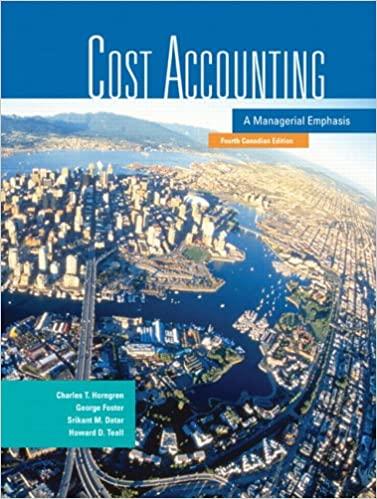Joint cost allocation, physical measures method (continuation of 15-21). Assume that $RC is not able to sell
Question:
Joint cost allocation, physical measures method (continuation of 15-21). Assume that
$RC is not able to sell its gas output. The refinery is located in a remote area and a terrorist group has just destroyed major sections of the gas pipeline used to transport the gas to market.
The pipeline that carries the crude oil and natural gas liquid is still operational. The $inclair Production Company must now reinject the gas into the offshore field. The costs ofthe hydro¬
carbons to $RC will not be reduced, but $inclair Production (not $RC) will bear the cost of gas reinjection. No separable costs ofgas production beyond the splitoffpoint will now be incurred.
2.
Required 1. Assume that the same data for all three outputs for August 2007 apply to the new set offacts.
$how the operating income for each salable product using the estimated NRV method of joint cost allocation.
Assume the taxation authorities argue that, for crude oil income tax determination, the physical measures method should be used to allocate joint costs and that all outputs
(including gas, whether sold or reinjected) should be used in deciding the cost-allocation weights. Do you agree with this argument? Explain your position,
Step by Step Answer:

Cost Accounting A Managerial Emphasis
ISBN: 9780131971905
4th Canadian Edition
Authors: Charles T. Horngren, George Foster, Srikant M. Datar, Howard D. Teall





